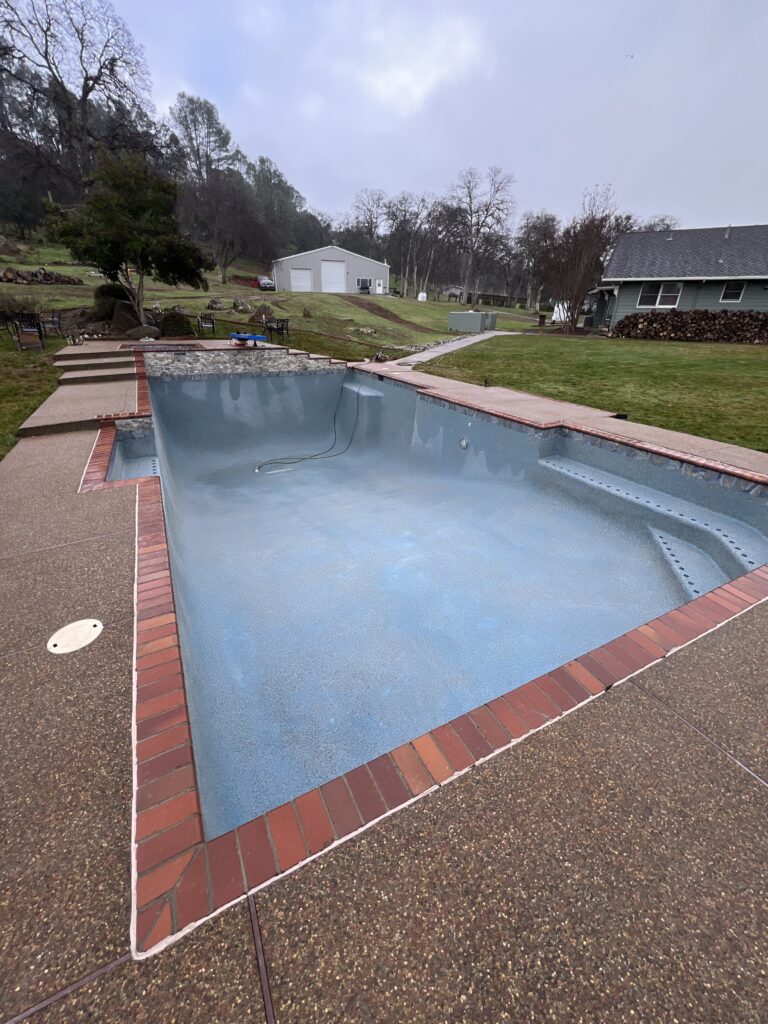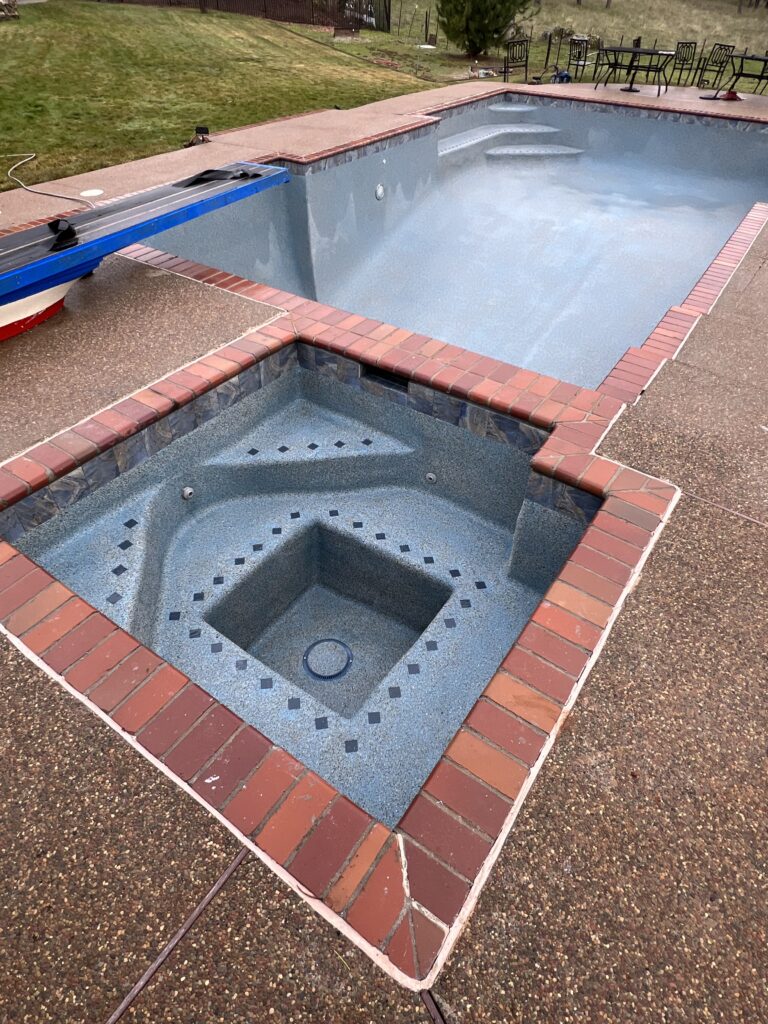

Epoxy painted spa
Pool Plastering El Dorado County, CA
A sparkling, inviting swimming pool is the crown jewel of any outdoor space, offering a refreshing oasis for relaxation and recreation. However, over time, the plaster finish of a pool can deteriorates due to various factors such as age, water chemistry, and environmental exposure. When this occurs, it’s crucial to consider pool plastering to restore and maintain the pool’s beauty, structural integrity, and functionality.
### Understanding Pool Plastering
Pool plastering is the process of applying a layer of waterproof material to the interior surface of a swimming pool. This protective layer not only enhances the pool’s aesthetics but also safeguards the underlying structure from damage caused by water and chemical exposure.
### Reasons to Re-Plaster Your Swimming Pool
#### 1. Restoration of Aesthetic Appeal
Over time, the original luster and smoothness of pool plaster can diminish, leading to discoloration, staining, and surface irregularities. Re-plastering your pool can breathe new life into its appearance, offering a fresh, clean, and inviting look that revitalizes the entire outdoor area.
#### 2. Structural Integrity and Durability
As the primary barrier between the pool water and the underlying structure, the plaster plays a vital role in maintaining the pool’s integrity. Cracks, chips, and deterioration in the plaster can compromise the structural stability of the pool, potentially leading to leaks and more extensive damage. Re-plastering helps reinforce the structural integrity of the pool, ensuring its long-term durability and functionality.
#### 3. Enhanced Comfort and Safety
A deteriorating plaster surface can become rough and abrasive, causing discomfort to swimmers and increasing the risk of cuts and injuries. By re-plastering the pool, you can create a smooth, comfortable surface that is safe for both swimmers and pool equipment.
#### 4. Improved Water Quality
Old, deteriorating plaster can contribute to chemical imbalances in the pool water, leading to increased maintenance efforts and potential water quality issues. Fresh plaster creates a clean, non-porous surface that helps maintain proper water chemistry, resulting in clearer, more inviting water.
#### 5. Long-Term Cost Savings
While re-plastering is an investment, it can help prevent more extensive and costly repairs in the future. By addressing deteriorating plaster in a timely manner, you can avoid potential structural damage and the need for major renovations, ultimately saving money in the long run.
### Conclusion
In conclusion, pool plastering is a vital aspect of maintaining a beautiful, functional, and safe swimming pool. By addressing the signs of deteriorating plaster and investing in re-plastering, when necessary, pool owners can ensure that their aquatic oasis remains a source of enjoyment for years to come. Whether it’s enhancing aesthetic appeal, reinforcing structural integrity, or improving water quality, the benefits of pool plastering are undeniable, making it a worthy investment for any pool owner.


